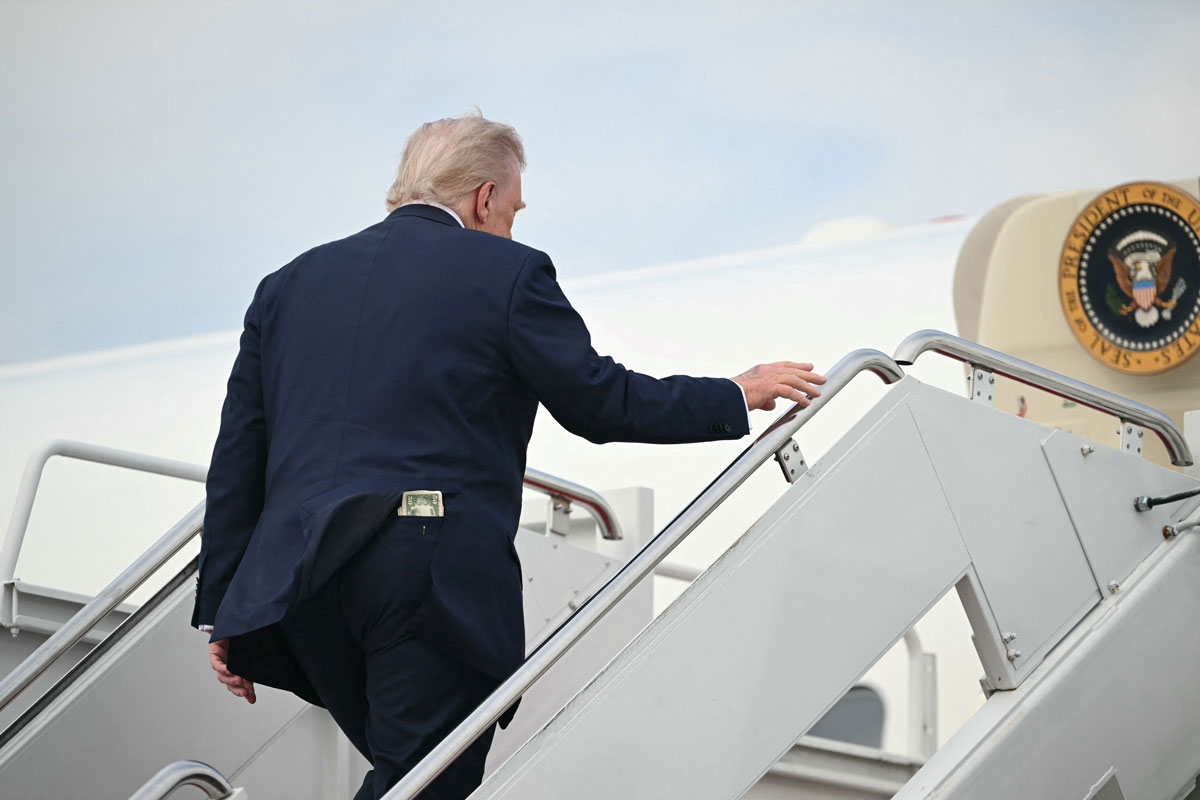The biggest winners under Donald Trump's tax plan
A cornerstone of Donald Trump’s populist appeal to the American electorate is his promise to slash taxes for all, while making the wealthy pay their fair share. “We’re going to make our country great again, and we need the rich in order to make the great, I’m sorry to tell you,” the Republican front-runner said last week in a speech after winning the Florida, Illinois and North Carolina primaries.
But is such fervent rhetoric matched by Trump’s actual policies? Critics say no, noting that by far the greatest proportion of the tax benefits would go to upper-income earners. Some experts also warn that his plan -- barring draconian spending cuts to offset what they say would be a plunge in government revenue from ratcheting down taxes -- would send the nation’s debt soaring to dangerous levels.
“To the extent he says he’s fighting for working people, his tax plan refutes that -- it’s a complete refutation,” said Robert Shapiro, chairman of economics and security advisory firm Sonecon and formerly Under Secretary of Commerce for Economic Affairs in the Bill Clinton administration. “He’s fighting for himself, and those like him, at the very top of the income distribution. That’s what his policies do.”
Trump proposes to help average Americans by nearly quadrupling the standard tax deduction from $6,300 to $25,000 for individuals and from $12,600 to $50,000 for couples. Single people earning less than $25,000 and spouses making less than $50,000, or some 75 million Americans, would pay zero federal income tax.
The remaining tax brackets would be set at 10 percent, 20 percent and 25 percent, with the top marginal rate being for those earning more than $150,000 and $300,000 for single and married filers, respectively.
Trump’s plan would save middle-income households an average of roughly $2,700 per year in taxes, or about 4 percent of their income, according to the nonpartisan Tax Policy Center (TPC). But richer people would net considerably bigger savings.
Those in the top 5 percent would see an average tax cut of nearly $28,000, while 1 percenters would save $275,00, or more than 17 percent of their after-tax income. The top 0.1 percent of households -- those with net assets of at least $20 million -- would see their annual tax bill fall by $1.3 million, or nearly 19 percent of their income.
Another way to think about it, according to the TPC: The bottom 80 percent of taxpayers would see their average federal income tax rates drop by between 0.9 percent and 4.8 percent. For the top 20 percent, the rate would fall 7.2 percent , while the top 1 percent would get a 12.5 percent cut.
In another proposal that has proved popular on both left and right, Trump has also said he wants to eliminate the tax break for “carried interest.” That refers to the share of profits that top hedge fund and private equity firm executives get on their investments. Under the law, carried interest is taxed at the 23.8 percent rate on capital gains, rather than as ordinary income.
But Trump’s pledge to close the loophole is “meaningless,” Shapiro said. That’s because the real estate mogul also wants to cut the top tax rate for so-called pass-through entities -- the millions of limited liability, S-Corporation or other tax structures set up to ensure that business owners don’t get double-taxed -- to 15 percent, as he would for all companies.
Hedge funds and private equity funds also qualify as pass-through arrangements. As a result, the top rate on carried interest would end up being more than a third lower under Trump’s plan even if the loophole were closed, according to the TPC.
“He’s actually going to provide a much larger tax break to hedge funds and private equity fund general partners than what the carried-interest loophole does,” Shapiro said.
Along with who benefits the most under Trump’s tax policy, questions are being raised about the plan’s impact on the U.S. economy. His tax cuts would reduce government revenue by upwards of $9.8 trillion over 10 years, the TPC estimates, while the advocacy group Citizens for Tax Justice puts the loss at $12 trillion.
America’s GDP -- the value of all goods and services -- is roughly $17 trillion.
Shapiro estimates that the revenue losses in 2020 would come to $915 billion. That’s equal to the entire U.S. defense budget projected for that year, plus more than 40 percent of Social Security benefits.
Trump describes his proposal as revenue-neutral, meaning that it wouldn’t require spending cuts or tax hikes. But he hasn’t detailed how his administration would finance such a massive reduction in taxes, which would amount to the largest in U.S. history, topping even President Ronald Reagan’s massive cut in 1981.
In some ways, the point might be moot. By their very scale, such cuts would be dead on arrival in Congress, some experts say.
“Nobody’s who is at all familiar with the legislative process takes these tax cuts seriously because they claim two things will be used to pay for them -- economic growth and spending cuts -- and the orders of magnitude aren’t within the realm of possibility on either count. They’re not viable,” said Martin Sullivan, chief economist for Tax Analysts, a nonprofit publisher, and a former U.S. Treasury Department economist in the George H.W. Bush administration.
Trump isn’t alone in wanting to reduce taxes. Sen. Ted Cruz of Texas, the real estate mogul’s main rival for the Republican nomination, has proposed cuts that would cost $8.7 trillion (The tax plan offered by Florida Senator Marco Rubio, who has dropped out of the race, ran to $6.7 trillion.)
Sullivan calls all of these proposals “irresponsible,” saying they would cause fiscal chaos. He noted that America’s debt-to-GDP ratio today is 75 percent, three times the level in 1981 when Reagan slashed taxes.
“It could cause a debt crisis,” Shapiro added, echoing concerns that tax cuts of this magnitude would cripple the economy.”The international financial markets would say, ‘We don’t think you can carry this kind of debt.’”
Whether Trump would make the U.S. great again is an open question, but it seems clear his tax plan would make the nation’s debt quite great.





